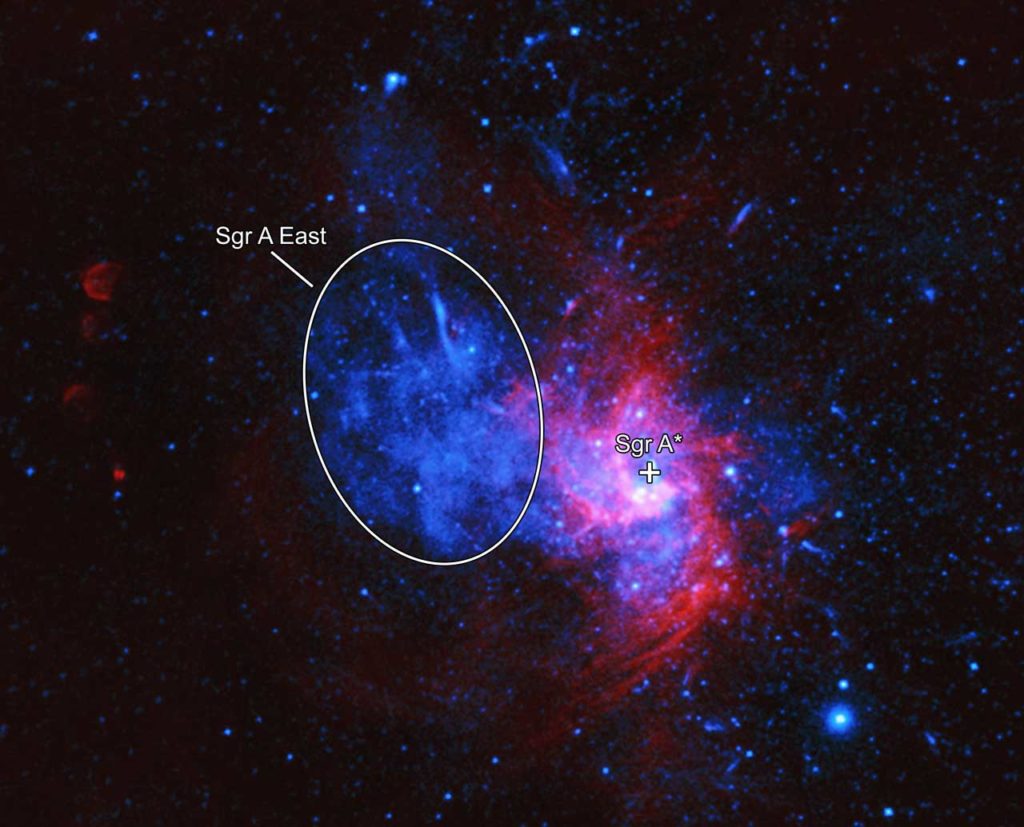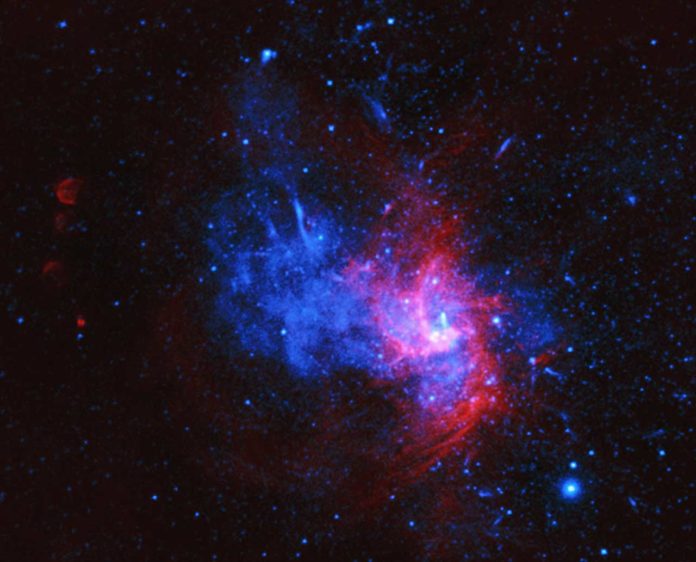Using NASA’s Chandra X-ray Observatory, astronomers may have found our galaxy’s first example of an unusual kind of stellar explosion. This discovery aids in comprehending how some stars shatter and seed the universe with elements critical for life on Earth.
This fascinating item, located near the Milky Way center, is a supernova remnant called Sagittarius A East, or Sgr A East for short. Based on Chandra data, astronomers recently classified the object as the remains of a massive star that detonated as a supernova, one of many kinds of exploded stars that scientists have cataloged.
Utilizing longer Chandra observations, a team of astronomers has now instead presumed that the object is leftover from a different type of supernova. It is the explosion of a white dwarf, a shrunken stellar ember from a fuel-depleted star like our Sun. When a white dwarf pulls a lot of material from a partner star or converges with another white dwarf, the white dwarf is destroyed, joined by a staggering glimmer of light.
Such “Type Ia supernovae” mete out almost the same amount of light every time, no matter where they are located. This allows scientists to accurately measure distances across space and study the expansion of the universe.

According to astronomers, Sgr A East did not emerge from an ordinary Type Ia. Instead, it belongs to a particular group of supernovae that produce different relative amounts of elements than traditional Type Ias and less powerful explosions. This subset is referred to as “Type Iax,” a potentially important member of the supernova family.
Ping Zhou of Nanjing University in China, who led the new study while at the University of Amsterdam, said, “While we’ve found Type Iax supernovae in other galaxies, we haven’t identified evidence for one in the Milky Way until now. This discovery is important for getting a handle of the myriad ways white dwarfs explode.”
Co-author Shing-Chi Leung of Caltech in Pasadena, California, said, “This result shows us the diversity of types and causes of white dwarf explosions and the different ways that they make these essential elements. If we’re right about the identity of this supernova’s remains, it would be the nearest known example to Earth.”
Zhiyuan Li, also of Nanjing University, said, “This supernova remnant is in the background of many Chandra images of our galaxy’s supermassive black hole taken over the last 20 years. We finally may have worked out what this object is and how it came to be.”
Within Milky Way, three confirmed Type Ia supernova remnants and two candidates are younger than 2,000 years. This corresponds to an age when remnants are still relatively bright before fading later. Suppose Sgr A East is younger than 2,000 years and resulted from a Type Iax supernova. In that case, this study suggests that our galaxy is in alignment concerning the relative numbers of Type Iax supernovae seen in other galaxies.
Journal Reference:
- Ping Zhou et al. Chemical abundances in Sgr A East: evidence for a Type Iax supernova remnant. arXiv:2006.15049
